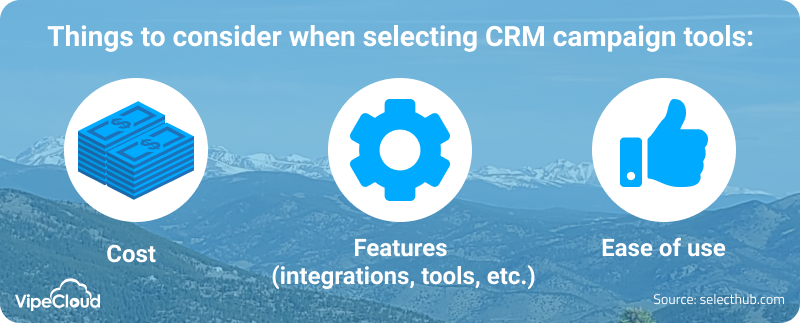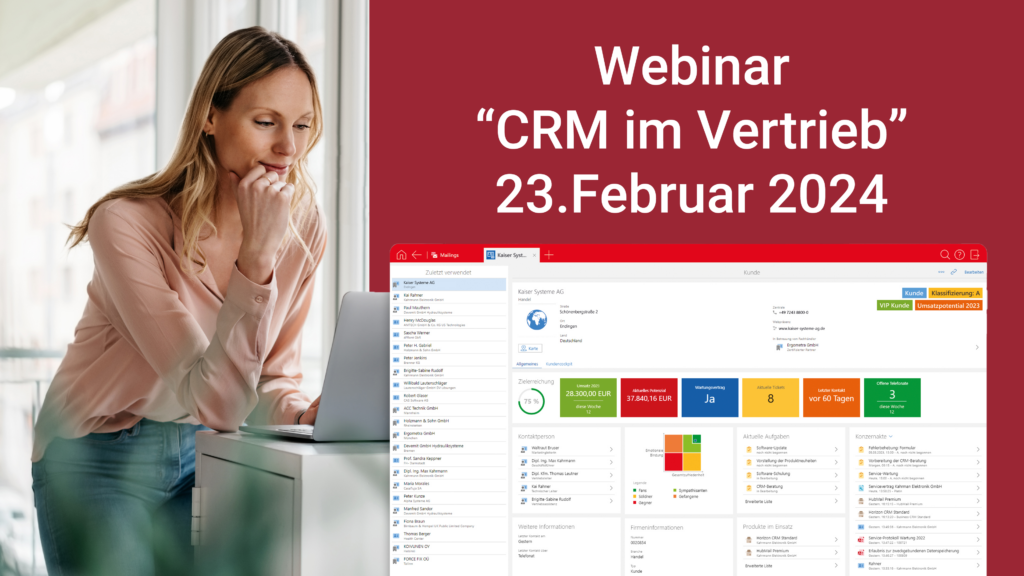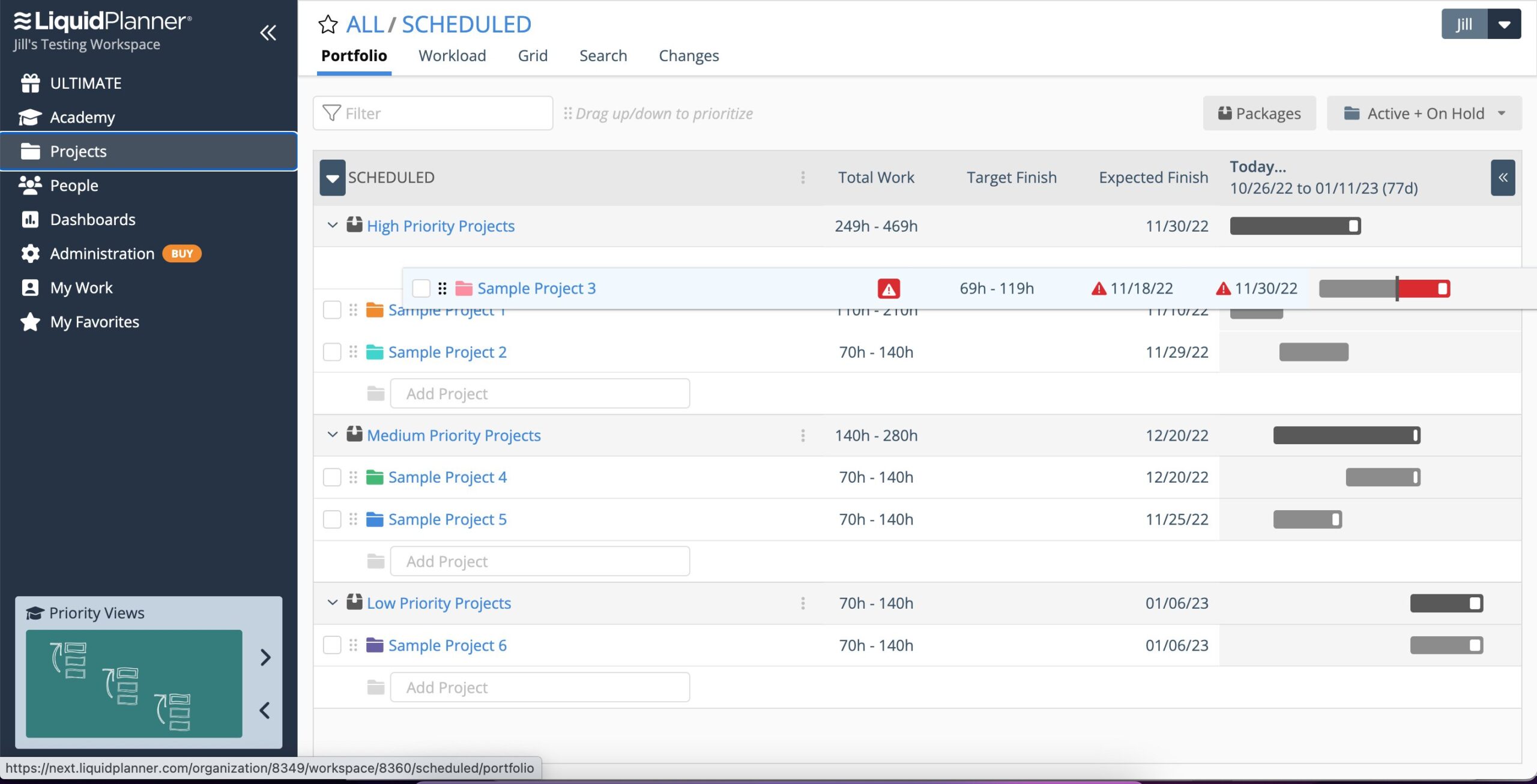
In today’s competitive business landscape, simply having a great product or service isn’t enough. You need to connect with your audience, understand their needs, and nurture relationships to thrive. That’s where CRM (Customer Relationship Management) marketing campaigns come in. They’re your secret weapon for building lasting customer loyalty, boosting sales, and ultimately, growing your business. This article delves into a treasure trove of CRM marketing campaign ideas, designed to spark your creativity and help you craft campaigns that truly resonate with your customers.
Understanding the Power of CRM Marketing
Before we dive into the campaign ideas, let’s quickly recap why CRM marketing is so crucial. CRM systems are more than just databases; they’re powerful tools that allow you to:
- Centralize Customer Data: Store all customer interactions, preferences, and purchase history in one place, providing a 360-degree view of each customer.
- Personalize Communication: Tailor your messages based on individual customer needs and behaviors, leading to higher engagement.
- Automate Tasks: Streamline repetitive tasks like email marketing and lead nurturing, freeing up your team’s time.
- Improve Customer Service: Provide faster and more efficient support by having all relevant information at your fingertips.
- Track and Measure Results: Gain valuable insights into campaign performance, allowing you to optimize your strategies for maximum impact.
By leveraging these capabilities, CRM marketing campaigns can significantly enhance your marketing efforts, leading to increased customer satisfaction, higher conversion rates, and improved revenue.
CRM Marketing Campaign Ideas: A Deep Dive
Now, let’s explore a range of CRM marketing campaign ideas, categorized for easy navigation. These ideas are designed to be adaptable to various industries and business sizes. Remember, the key is to tailor them to your specific target audience and business goals.
1. Welcome Series Campaigns
First impressions matter. A welcome series is a sequence of automated emails triggered when a new customer joins your mailing list or creates an account. These campaigns are designed to introduce your brand, showcase your value proposition, and guide new customers toward their first purchase.
- Welcome Email 1: A warm greeting, thanking the customer for signing up and setting expectations for future communication. Briefly introduce your brand and core values.
- Welcome Email 2: Highlight your key products or services. Include testimonials or social proof to build trust. Offer a special welcome discount to incentivize a purchase.
- Welcome Email 3: Provide valuable content related to their interests, such as a helpful guide, blog post, or video tutorial. Position yourself as a trusted resource.
- Welcome Email 4: Encourage them to connect on social media and offer exclusive content or promotions for followers.
Pro Tip: Segment your welcome series based on how the customer signed up (e.g., through a lead magnet, a website signup form). This allows you to personalize the content even further.
2. Lead Nurturing Campaigns
Not every lead is ready to buy immediately. Lead nurturing campaigns are designed to guide potential customers through the sales funnel, providing them with valuable information and building trust over time. These campaigns typically involve a series of emails, content offers, and targeted website experiences.
- Identify Leads: Use lead scoring to prioritize leads based on their engagement and behavior (e.g., website visits, content downloads, email opens).
- Segmentation: Segment your leads based on demographics, interests, and stage in the buying cycle.
- Content Delivery: Deliver relevant content at each stage of the funnel. For example, provide educational content for early-stage leads, case studies for mid-stage leads, and product demos for late-stage leads.
- Call to Action: Include clear calls to action in each email, guiding leads towards the next step (e.g., scheduling a demo, requesting a quote, making a purchase).
Pro Tip: Integrate your CRM with your marketing automation platform to automate lead nurturing workflows. Track lead engagement and adjust your campaigns based on performance data.
3. Customer Retention Campaigns
Acquiring new customers is expensive. Customer retention campaigns focus on keeping existing customers happy and engaged, encouraging repeat purchases and building brand loyalty. These campaigns often involve personalized offers, exclusive content, and proactive customer service.
- Personalized Recommendations: Suggest products or services based on past purchases and browsing history.
- Exclusive Offers: Offer discounts, promotions, and early access to sales to loyal customers.
- Birthday Emails: Send personalized birthday greetings with a special offer or gift.
- Anniversary Emails: Celebrate the anniversary of their first purchase or account creation with a thank-you message and a special offer.
- Win-back Campaigns: Re-engage inactive customers with special offers or incentives to encourage them to make a purchase.
Pro Tip: Implement a customer loyalty program to reward repeat purchases and encourage customer engagement. Segment your retention campaigns based on customer lifetime value (CLTV) to tailor your offers and communication.
4. Cross-Selling and Upselling Campaigns
Cross-selling and upselling are effective strategies for increasing revenue by encouraging customers to purchase additional products or services. These campaigns leverage customer data to identify opportunities for relevant offers.
- Cross-selling: Recommend complementary products based on the customer’s past purchases. For example, if a customer buys a camera, recommend a memory card, a camera bag, or a tripod.
- Upselling: Offer a more expensive or premium version of a product or service the customer is considering. For example, if a customer is looking at a basic software plan, offer them a more feature-rich plan.
- Targeted Emails: Send personalized emails with product recommendations based on the customer’s purchase history and browsing behavior.
- Website Personalization: Display targeted product recommendations on your website based on the customer’s current browsing session.
Pro Tip: Use A/B testing to optimize your cross-selling and upselling offers. Track conversion rates and revenue generated to measure the effectiveness of your campaigns.
5. Feedback and Review Campaigns
Gathering customer feedback is essential for improving your products, services, and overall customer experience. Feedback and review campaigns encourage customers to share their opinions and provide valuable insights.
- Post-Purchase Surveys: Send surveys after a purchase to gather feedback on the customer’s experience.
- Product Reviews: Encourage customers to write reviews for your products or services. Offer incentives, such as discounts or entries into a contest, to encourage participation.
- Net Promoter Score (NPS) Surveys: Measure customer loyalty by asking customers how likely they are to recommend your brand to others.
- Customer Service Follow-up: Follow up with customers after they interact with your customer service team to gather feedback on their experience.
Pro Tip: Make it easy for customers to provide feedback. Use short, concise surveys and provide multiple channels for feedback, such as email, online forms, and social media.
6. Re-engagement Campaigns
Customers who haven’t interacted with your brand in a while may need a little nudge to re-engage. Re-engagement campaigns are designed to rekindle interest and encourage customers to return to your business.
- Identify Inactive Customers: Segment your customer base based on inactivity (e.g., no purchases in the last six months, no email opens in the last three months).
- Personalized Emails: Send personalized emails with special offers, exclusive content, or reminders of the benefits of your products or services.
- Win-back Offers: Offer a compelling incentive to encourage customers to make a purchase, such as a discount, free shipping, or a special gift.
- Content Updates: Share updates on new products, features, or services to remind customers of your value proposition.
Pro Tip: Analyze the reasons for customer inactivity. Was it a lack of engagement, poor customer service, or a competitor’s offer? Use this information to tailor your re-engagement efforts.
7. Event-Based Campaigns
Leverage events and milestones to connect with your customers and create timely, relevant marketing campaigns. These campaigns can be triggered by specific dates, customer actions, or company events.
- Birthday Campaigns: Send personalized birthday greetings with special offers.
- Anniversary Campaigns: Celebrate the anniversary of a customer’s first purchase or account creation.
- Holiday Campaigns: Promote special offers and discounts during holidays.
- Product Launch Campaigns: Announce new product launches and generate excitement among your customers.
- Webinar or Event Invitations: Invite customers to webinars, workshops, or other events related to your products or services.
Pro Tip: Use CRM data to personalize your event-based campaigns. Tailor your messages based on customer interests, purchase history, and demographics.
8. Segmentation-Based Campaigns
Segmentation is the cornerstone of effective CRM marketing. By dividing your customer base into smaller groups based on shared characteristics, you can tailor your messaging and offers to resonate with each segment. Here are some examples of segments and campaign ideas:
- Demographic Segmentation: Target customers based on age, gender, location, income, and other demographic factors. For example, you could run a campaign targeting customers in a specific geographic area.
- Behavioral Segmentation: Target customers based on their past purchases, website activity, email engagement, and other behaviors. For example, you could run a campaign targeting customers who have abandoned their shopping carts.
- Psychographic Segmentation: Target customers based on their lifestyles, interests, values, and attitudes. For example, you could run a campaign targeting customers who are interested in a specific product category.
- RFM Segmentation (Recency, Frequency, Monetary): Segment customers based on how recently they made a purchase, how frequently they purchase, and how much they spend. This is a powerful way to identify your most valuable customers and tailor your offers accordingly.
Pro Tip: Use your CRM to track and analyze customer data to identify the most relevant segments for your business. Continuously refine your segmentation strategy to improve campaign performance.
9. Mobile Marketing Campaigns
With the increasing use of mobile devices, incorporating mobile marketing into your CRM strategy is crucial. Mobile campaigns offer direct and personalized communication with customers on their smartphones.
- SMS Marketing: Send text messages to customers with promotions, reminders, and updates.
- Mobile App Notifications: Send push notifications to users of your mobile app to announce new products, special offers, or important updates.
- Location-Based Marketing: Use location data to target customers with relevant offers when they are near your store or a specific event.
- Mobile-Optimized Emails: Ensure your email campaigns are mobile-friendly to provide a seamless experience for customers on their smartphones.
Pro Tip: Respect customer privacy and obtain consent before sending mobile marketing messages. Keep your messages concise and relevant to avoid overwhelming customers.
10. Personalized Website Experiences
Extend your CRM data to personalize the website experience for your customers. This can significantly improve engagement and conversion rates.
- Personalized Content: Display content on your website that is tailored to the customer’s interests, purchase history, and demographics.
- Product Recommendations: Show product recommendations based on the customer’s browsing history and purchase behavior.
- Dynamic Offers: Display personalized offers and promotions based on the customer’s segment or stage in the buying cycle.
- Personalized Landing Pages: Create dedicated landing pages for specific customer segments or campaigns to provide a targeted experience.
Pro Tip: Integrate your CRM with your website platform to seamlessly personalize the customer experience. Use A/B testing to optimize your website personalization efforts.
Best Practices for CRM Marketing Campaigns
While the campaign ideas above provide a foundation for success, implementing best practices is crucial for maximizing your results. Here are some key considerations:
- Data Quality: Ensure your CRM data is accurate, complete, and up-to-date. Inaccurate data can lead to irrelevant messaging and poor campaign performance.
- Segmentation: Segment your audience based on relevant criteria to personalize your messaging and offers.
- Personalization: Tailor your communication to individual customer preferences and behaviors.
- Automation: Automate repetitive tasks to save time and improve efficiency.
- Testing: A/B test different elements of your campaigns, such as subject lines, email content, and calls to action, to optimize performance.
- Measurement: Track key metrics, such as open rates, click-through rates, conversion rates, and ROI, to measure the effectiveness of your campaigns.
- Compliance: Adhere to all relevant privacy regulations, such as GDPR and CCPA, to protect customer data and maintain trust.
- Mobile Optimization: Ensure your campaigns are optimized for mobile devices, as a significant portion of your audience will likely be accessing them on their smartphones.
- Integrations: Integrate your CRM with other marketing tools, such as email marketing platforms, social media platforms, and website analytics tools, to create a seamless and efficient workflow.
Choosing the Right CRM System
The foundation of any successful CRM marketing strategy is the right CRM system. Selecting the right platform depends on your business size, industry, budget, and specific needs. Here are some popular CRM systems to consider:
- Salesforce: A leading CRM platform with a wide range of features and integrations. Suitable for businesses of all sizes, but can be complex and expensive.
- HubSpot CRM: A user-friendly CRM platform with a free version and affordable paid plans. Ideal for small and medium-sized businesses.
- Zoho CRM: A comprehensive CRM platform with a variety of features and integrations. Offers affordable pricing and is suitable for businesses of all sizes.
- Microsoft Dynamics 365: A powerful CRM platform integrated with Microsoft’s suite of business applications. Suitable for larger enterprises.
- Pipedrive: A sales-focused CRM platform with a simple and intuitive interface. Ideal for sales teams.
When choosing a CRM system, consider the following factors:
- Features: Ensure the platform offers the features you need, such as contact management, lead management, sales automation, and email marketing integration.
- Ease of Use: Choose a platform that is easy to learn and use, so your team can quickly adopt it.
- Integrations: Ensure the platform integrates with your existing marketing tools and systems.
- Scalability: Choose a platform that can scale with your business as it grows.
- Pricing: Compare pricing plans and choose a platform that fits your budget.
- Customer Support: Consider the level of customer support offered by the platform.
Measuring the Success of Your CRM Marketing Campaigns
Tracking and analyzing the results of your CRM marketing campaigns is crucial for understanding what’s working and what’s not. Key metrics to monitor include:
- Open Rate: The percentage of emails that are opened by recipients.
- Click-Through Rate (CTR): The percentage of recipients who click on a link in your email.
- Conversion Rate: The percentage of recipients who complete a desired action, such as making a purchase or filling out a form.
- Customer Acquisition Cost (CAC): The cost of acquiring a new customer.
- Customer Lifetime Value (CLTV): The predicted revenue a customer will generate over their relationship with your business.
- Return on Investment (ROI): The profitability of your campaigns.
- Website Traffic: Track the number of visitors to your website and the sources of that traffic.
- Lead Generation: Measure the number of leads generated by your campaigns.
- Customer Satisfaction: Use surveys and feedback forms to measure customer satisfaction.
By regularly analyzing these metrics, you can identify areas for improvement and optimize your campaigns for maximum impact. Use the data to refine your targeting, personalize your messaging, and improve your overall marketing strategy.
Final Thoughts: Unleashing the Power of CRM
CRM marketing is a powerful strategy for building strong customer relationships, driving sales, and growing your business. By implementing the campaign ideas and best practices outlined in this article, you can create a customer-centric marketing approach that fosters loyalty and generates sustainable growth. Remember to stay adaptable, continuously test and optimize your campaigns, and embrace the ever-evolving landscape of CRM marketing. The journey to success starts with understanding your customers and building meaningful connections. Embrace the power of CRM, and watch your business flourish.
In conclusion, CRM marketing is more than just a set of tactics; it’s a philosophy that places the customer at the heart of your business. By focusing on understanding their needs, providing value, and building lasting relationships, you can transform your marketing efforts into a powerful engine for growth. So, take these CRM marketing campaign ideas, adapt them to your unique business context, and embark on a journey towards increased customer satisfaction, higher revenue, and long-term success.

